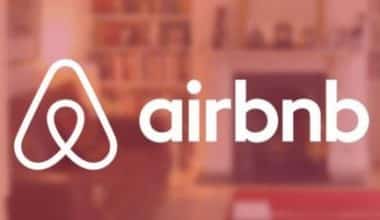Google’s position in eCommerce is enormous as a leading technology business. Google is bound to feature in your journey, whether you’re a business owner refining your online store to cater to the world’s greatest search engine or a buyer discovering new things.
But how does Google make money?
With Google’s ad revenues in the billions and rising year after year, it’s apparent that advertising is one of the company’s most important revenue sources. However, that is not the only way Google makes money. Here are Google’s biggest revenue sources.
Google (now Alphabet) makes most of its money from advertising. While the Google search engine is free, it is monetized through sponsored advertising. In 2021, Google’s advertising revenue will exceed $209 billion (excluding Google Search, YouTube Ads, and Network Members Sites), compared to $257 billion in net sales. Advertising accounted for more than 81% of net sales, followed by Google Cloud ($19 billion) and other Google revenue streams (Google Play, Pixel phones, and YouTube Premium).
How Does Google Make Money Through Ads?
Google’s economic model includes three components that help it advertise: AdWords, AdSense, and AdMob.
AdWords is a platform for advertisers that allows them to create and launch ad campaigns on Google Search and Google Display Network. It determines which advertising will appear on the Google homepage and on partner websites.
AdSense is a publisher-oriented platform that allows publishers to make money by placing advertising on their websites. The Google Display Network includes these publisher websites.
AdMob is similar to AdSense, although it is only for mobile applications.
What Is Google Ad Bidding, and How Does It Work?
Google ad campaigns are classified into two types:
- Search Network Campaign – Google Search Campaign allows you to place adverts in Google search results. When someone searches for the relevant keyword, these adverts are displayed.
- Display Network Campaign – Google Display Network Campaign allows you to display your adverts on Google apps such as Gmail and YouTube, as well as millions of other websites and applications that monetise themselves with Adsense and AdMob. These adverts can be targeted based on the activities of people on your website as well as the targeted keywords (which will be shown on the most relevant content).
Typically, multiple advertisers bid on the same keyword (search network and display network) or placement (display network), and the winner is determined by Google launching an auction. The CPC bid (the maximum amount you’re willing to bid for a click on the ad) and the quality score are used to determine the winner of this auction (a metric that decides how relevant your ad is to the user).
The product of these two criteria yields the advertisers’ ad rank, and the one with the highest ad rank wins the auction.
Here’s an example to help clarify things:
| Advertiser | Max Bid (CPC) | Quality Score | Ad Rank |
| A | $2 | 10 | 20 |
| B | $3 | 6 | 18 |
| C | $5 | 3 | 15 |
Even though advertiser C placed the highest price, advertiser A won the auction because his ad was deemed a good fit for the keyword/placement.
Read Also: The Google Brand Strategy: How it Dominates Markets
Now, how much will advertiser A actually spend per click for this ad?
Previously, this bid was taken in the form of a generalized second price auction system, which was an extension of the Vickrey auction in which the successful bidder paid the second-highest bid, all in hidden bidding, so no one knew what their competitors had bid for.
Price Paid = Second highest ad rank/Your quality score + $0.01 was the formula for this strategy.
This implies that Advertiser A would have paid: 18/10 times $0.01 equals $1.81 per ad click.
Google, on the other hand, has lately switched to first-price auctions, in which the advertiser now pays what he bid for.
This means that advertiser A will now pay the following: 20/10 = $2 per ad click.
The quality score is extremely significant in ranking adverts.
Consider a bid for washing machines in which numerous advertisers compete. The advertiser with the highest bid (say, Amazon) wins since it also has a high-quality score.
However, if you alter the keyword to the top-loading washing machine: Even if Amazon bid more, the top-loading washing machine term would have been more relevant with the Whirlpool ad, therefore Google places the more specific ad based on the quality score.
The inclusion of the quality score makes sense because Google only targets the prospective market. As a result, it is the perfect platform for advertisers to increase their reach. Of course, Google possesses a wealth of information on the users to whom the advertising will be shown. For starters, it has access to your cookie data and searches history.
Adwords by Google
An advertiser must pay only if their advertisement is clicked on a publishing partner’s website while using Google AdWords. As a result, the fee is calculated as a cost per click.
This is a proven approach for advertisers to determine whether Google AdWords is affecting their reach.
Let us estimate the profit based on this information:
In the United States, there are approximately 4,090,000 searches per month for ‘cheap flights,’ with an estimated CPC of $2.44. So, even if we assume a 40% click-through rate on the advertising, we’re looking at about $3,991,840, which is a lot of money from my perspective. Again, this is only one advertisement for a certain keyword. Consider the cluster of keywords and the costing together. This results in some staggering values.
Google Shopping Advertisements
When Google believes that a specific search query was performed with the intent to buy, it displays Google Shopping Ads.
You’ve probably seen Google Shopping advertising.
Because the ad structure is more direct and the pricing is more clearly shown, Google shopping advertisements are excellent for identifying target shoppers.
Google Display Network
The interesting thing about Google Display Network is that it uses partners to distribute its adverts.
Advertisers are continually bidding for Ad space on a partner’s website or application. Of course, because it is the partner’s property, they can choose which advertisements to keep, which categories to keep, and which format and text style of the advertisement is best suited to go with the website’s appearance. To generate even more money, partners can add a Google-like search (with advertisements) to their websites.
In exchange, Google compensates the partner website every time a user views or clicks on the advertisement. The income split between the partner and Google is 3:2. (for search ads, it is 51:49). YouTubers, on the other hand, are paid in the 11:9 ratio.
The amount of money earned by a partner website (Adsense) or application (AdMob) from a click is determined by parameters such as keywords, industry, and the advertisement clicked on. If the number of visitors to your website is excessive, you can become a premium AdSense partner with a bigger revenue share.
Other Ways Google Make Money
Google’s business strategy has diversified far beyond search. Similarly, the revenue model has extended to incorporate money from Google Maps, G Suite, Google Cloud, Android, and Play Store, and acquisitions such as Dialogflow, Kaggle, and others.
#1. Google Maps Earnings
Google Maps follows in the footsteps of its parent firm, earning some of its money from adverts (local search ads and promoted pins). However, Google Maps generates the majority of its money through its API, which is used by large firms such as Uber, Trivago, Airbnb, Pokemon Go, and others. The software is priced on a pay-as-you-go basis, and developers receive a recurring $200 credit on their billing account each month to cover their usage costs.
The company has also worked with cab-hailing businesses such as Lyft, and available cabs and their pricing can be found on the Google Maps app.
#2. Google Translate Earnings
Google Translate, like Google Maps, is a free program for individuals that earn money when businesses utilize its API.
The cloud translation API supports over a hundred languages, has automatic language detection, and is available in the form of an easy-to-use Google REST API, where developers can simply send HTML documents and receive translated text.
The product is charged on a monthly basis based on usage.
#3. G Suite Earnings
G Suite is a cloud productivity and collaboration tool suite that includes Gmail, Calendar, Drive, Hangouts, Docs, Sheets, Slides, Sites, Jamboard, App Maker, and Vault. The brand follows a freemium business model, in which the individual user receives a certain amount of cloud space and functions for free but must pay when he wants more or wants to use it for business purposes.
For starters, G Suite can help you use Gmail to send emails using your domain name rather than ‘gmail.com’ and hold team conferences using Hangouts; and for large enterprises, it could be a one-stop cloud storage and management suite that also allows them to create low-code applications for their business. The basic subscription plan costs $6 per user per month (for up to 30 GB of Drive space) and may be upgraded to $25 per user per month (for unlimited Drive space).
#4. Other Google Cloud Services
Google Cloud includes G Suite, Maps API, and Translate API. The company, like Amazon, provides many more cloud-based solutions for developers and charges based on usage.
#5. Android and Play Store Earnings
Android does not directly generate revenue for Google, but it does help the company save millions (or billions) of dollars that would otherwise be spent on payments to other operating systems to keep Google as their default search engine and provide Google data to improve its advertising revenue model.
The company, on the other hand, has wisely incorporated freemium Google Play apps in every Android installation. Music, books, and games are among the many Play Apps that may be purchased and subscribed to on a smartphone.
#6. Wear OS Earnings
Wear OS is an operating system created specifically for smartwatches. Because it comes with numerous preinstalled Google Apps, the business model of this OS is identical to that of Android.
#7. Google Chrome Earnings
Google Chrome was created in response to the urgent need to stop web browsers from paying to keep Google as their default search engine. It’s a free web browser that allows Google to watch your online habits and utilize them to improve their performance and target adverts.
#8. Earnings From Devices (Made by Google)
The company has been in the hardware device market for three years. Google produces and distributes a variety of products, including Pixel, Pixel Slate, Chromebook, Chromecast, Home, and Wifi. The company has capitalized on its current brand image and has become a formidable competitor to Amazon, Apple, and Oneplus.
According to Android Authority, the corporation made $2.98 billion in profit in 2018, with the majority of the profit coming from the Pixel brand ($1.78 billion).
#9. Google Domains Earnings
Google Domains is a domain registration service provided by Google (currently in testing). The company operates similarly to other domain registration services such as Godaddy and NameCheap, and it even controls a top-level domain name,.dev.
The cost of a domain name starts at $12 per year.
Alphabet Financials
Alphabet made $20.6 billion in net profits during the fourth quarter of its fiscal year 2021, which ended on December 31, 2021. In comparison to the fourth quarter of fiscal 2020, net income increased by 35.6%. Revenue for the quarter was $75.3 billion, up 32.4% over the previous quarter.
Alphabet stated that its advertising business continues to grow well during the quarter. Despite supply difficulties, the company’s Pixel phones set a quarterly sales record. Alphabet’s cloud unit witnessed excellent revenue growth as well.
Alphabet’s Business Divisions
Beginning in the fourth quarter of fiscal 2020, Alphabet began dividing its operations into three reportable segments: Google Services, Google Cloud, and Other Bets. The corporation gives revenue and operating income breakdowns for each of these segments. It also reports unallocated corporate costs such as corporate initiatives, finance, and legal expenditures, and costs connected with certain joint R&D activities. Hedging profits (losses) on revenue are also included in corporate costs. All of these corporate costs are not included in the segment breakdowns below or the pie charts above. Prior to the fourth quarter of fiscal 2020, Alphabet divided its operations into two reportable segments: Google and Other Bets.
Google Products
The Google Services section includes a variety of products and services such as advertisements, Android, Chrome, hardware, Google Maps, Google Play, Search, and YouTube. Advertising accounts for the majority of the segment’s revenue. Other revenue sources include app sales, in-app purchases, digital content items, hardware, and fees for subscription-based products like YouTube Premium and YouTube TV.
In Q4 FY 2021, Google Services generated $69.4 billion, or approximately 92% of total revenue. Advertising sales accounted for 88% of category revenue, totaling $61.2 billion. Revenue in the segment is up 31.3% year on year compared to Q4 FY 2020. Google Services reported $26.0 billion in operating profits, up 36.3% from the previous quarter.
Due to operating losses in the other two segments as well as unallocated corporate costs, this amount topped Alphabet’s overall consolidated operating income of $21.9 billion. As a result, Google Services is the only business that now contributes to Alphabet’s overall operating profitability.
Google Cloud Platform
The Google Cloud category includes Google’s infrastructure and data analytics platforms, collaboration tools, and other enterprise-focused services. The majority of the segment’s revenue comes from fees paid for Google Cloud Platform services and collaboration products like Google Workspace (previously known as G Suite).
During the fourth quarter of the fiscal year 2021, Google Cloud generated $5.5 billion in sales, accounting for approximately 7% of total revenue. It was 44.6% higher than in the fourth quarter of fiscal 2020. The business is still losing money, with an operating deficit of $890 million in the third quarter. However, the operational deficit was less than the $1.2 billion reported in the previous quarter.
Recent Alphabet Developments
In its Q4 FY 2021 results announcement on Feb. 1, 2022, Alphabet revealed that its board of directors had approved a 20-for-one stock split, which would be implemented in the form of a one-time special stock dividend. Following the close of business on July 15, 2022, each stockholder of record as of the close of business on July 1, 2022, will receive a dividend of 19 extra shares of the company’s stock for each share held, if approved by shareholders.
Diversity and Inclusiveness in Alphabet Reports
So, as part of their effort to raise awareness about the significance of diversity in the workplace, we provide investors with a glimpse into Alphabet’s transparency and dedication to diversity, inclusiveness, and social responsibility. We reviewed the data Alphabet discloses to make how it reports the diversity of its board and employees to assist readers in making informed purchasing and investing decisions.
Conclusion
Google is an online behemoth that has extended beyond search management to include entertainment, business, hardware, and other products. Those considering a Google investment should analyze their most recent income, balance sheet, and cash flow statements, as well as compare their future potential to their investment objectives and horizon.
Related Articles
- HOW DOES SNAPCHAT MAKE MONEY: The Business Model
- CPA MARKETING NETWORK: 20 Best Networks With High Offers
- CPA Marketing Guide 2023 (+ Free Course)
- GOOGLE ADS CERTIFICATION: Detailed Overview
- Best Investment Management Software In 2023: Features and Reviews






